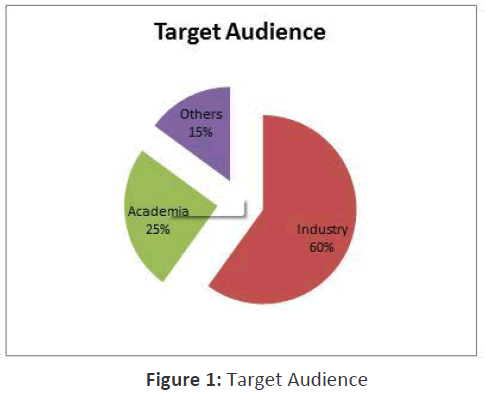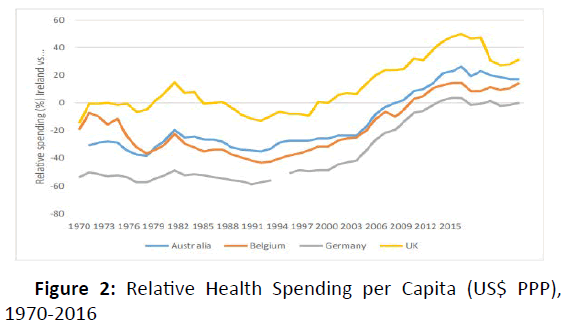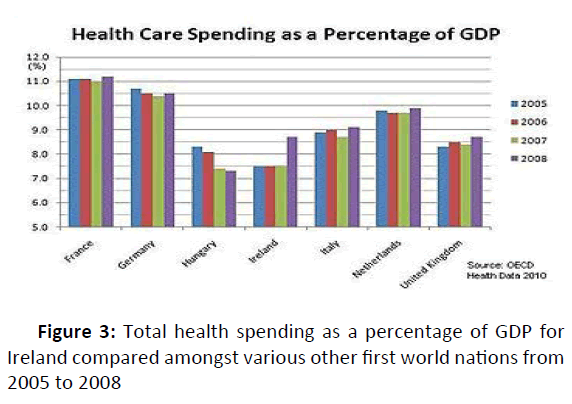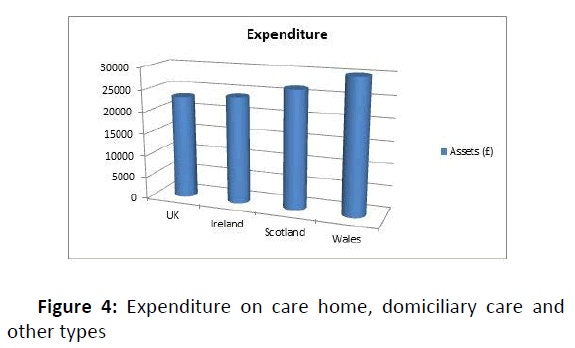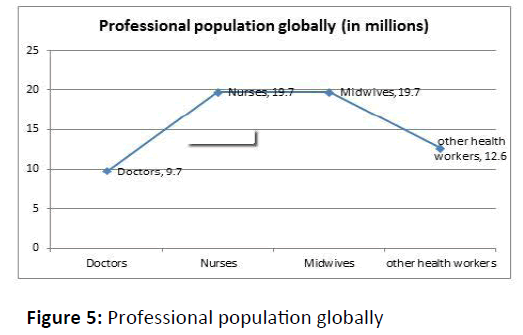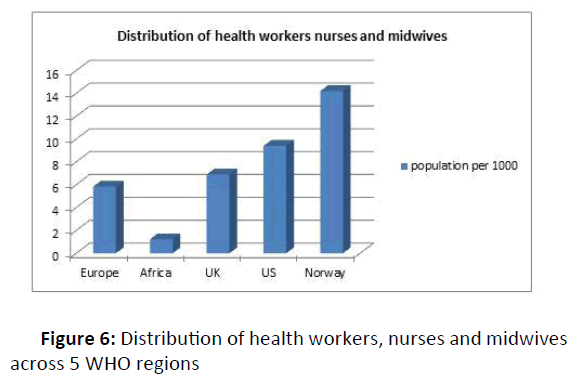ISSN : 2574-2825
Journal of Nursing and Health Studies
Market Analysis on Nursing Education & Research
Assistant Professor, Director of EM Simulation Education, UTMC Medical Advisor for Disaster Preparedness, School of Population Health, University of Toledo, USA, E-mail: rega.paul.nursing@gmail.com
Nursing Education & Research 2020 welcomes attendees, presenters and exhibitors from all over the world to Dublin, Ireland. We are delighted to invite you all to attend and register for the “29th Edition of World Congress on Nursing Education & Research” which is going to be held during May 25-25, 2020 Dublin, Ireland. The organizing committee is gearing up for an exciting and informative conference program including plenary lectures, symposia, workshops on a variety of topics, poster presentations and various programs for participants from all over the world. We invite you to join us at the Nursing Education-2020, where you will be sure to have a meaningful experience with scholars from around the world. All members of the Nursing Education-2020 organizing committee look forward to meeting you in Dublin, Ireland.
For more details please visit- nursingeducation.euroscicon.com
Importance & Scope:
Nursing Conference aims to discover advances in health practice, management and education in relation to health disparities as well as a breadth of other topics. Although each role carries different responsibilities as throughout the 21st Century, the role of nurse has evolved significantly to be the client's advocate and provide optimal care on the basis of evidence obtained through research. The conference will facilitate a series of discussions about state-of-the-art processes, organizational transitions, analytics, and technology innovation within the health industry and academia, regarding transformational care delivery and health management models. Nurses work in a variety of settings, including the hospital, the classroom, the community health department, the business sector, home health care, and the laboratory. Nursing is the protection, promotion, and optimization of health and abilities, prevention of illness and injury, through the diagnosis and treatment of humans.
Highlights of conference:
• Nursing Education and Research
• Nursing Care and Nursing Practice
• Types of Nursing Education
• Teaching Strategies in Nursing Career and Education
• Midwifery & Women’s Health
• Nursing Research and Evidence Based Practice
• Oncology Nursing
• Patient Safety & Health Care
• Nursing Informatics & Management
• Professional and Continuing Nursing Education
• Psychiatric and Mental Health Nursing
• Nursing Safety
• Critical Care and Emergency Nursing
• Travel Nurse
• Public Health Nursing
• Cardiac Nursing
• Environmental Health Nursing
• Clinical Nursing
• Pediatric Nursing
• Telemedicine and E-Health
• Future of Nursing Education
• Holistic Nursing
• Community and Home Health Nursing
• Occupational Health Nursing
• Gynecology and Obstetrics Nursing
• Geriatric Nursing
• Family Nursing
• Advances In Nursing
• Complementary Therapies in Nursing and Midwifery
Dublin is the capital and largest city of Ireland situated on a bay on the east coast, at the mouth of the River Liffey, it lies within the province of Leinster. It is bordered on the south by the Dublin Mountains, a part of the Wicklow Mountains range. Dublin is a historical and contemporary centre for education, the arts, administration and industry. Dublin, the city is known for its essence amalgamation of different cultures, people and ethnicity. There is so much to learn from this city. As of 2019 the city was listed by the Globalization and World Cities Research Network (GaWC) as a global city, with a ranking of "Alpha", which places it amongst the top thirty cities in the world. Worldwide known as lonely planet, Dublin is a unique place to learn and work in. The people here are of mixed ethnicity with great enthusiasts in their life. Dublin city is having its own charm and unique characteristics. Being capital of Ireland, it’s where the heart of people belongs. Restaurants, bar, markets keep on giving special host events throughout the year along with the distinctive product, services and style. The trip to Dublin is always of a great value with the choices in affordable accommodation, food and drink. If you choose to travel the city via DART Rail no wonder you will have enormous view to coastal towns, beaches, harbours and bracing sea view. People of this place are known for their friendly nature and are ready to help everyone anytime. This place provides the world’s best cuisine with all the Irish food.
Tourist Attraction:
They say you must be riding high on the Luck of the Irish to find yourself in the historic city of Dublin. The capital of one of the most charming island nation in the Norwegian Sea is where you find every other building a true depiction of modern architectures, colorful alleys, booze bars, and a lot of things to explore. The best part about these places to visit in Dublin is that they encompass years, uncountable stories, and magnificent work from different times. A tourist attraction includes Samuel Beckett Bridge, Convention Centre, Trinity College, O'Connell Bridge, The Custom House, Dublin Castle, Father Mathew Bridge, Henrietta Street, Leinster House, St. Stephens Green, Kilmainham Gaol, The Little Museum of Dublin, Saint Patrick's Cathedral, Christ Church Cathedral, Glasnevin Cemetery Museum, Grafton Street, Croke Park Stadium Tour & GAA Museum.
Dublin adorns the east coast of Ireland and the locals here acknowledge your presence with a big welcoming smile. Mountain excursion, city day trip, and coastal attractions are the perfect food for the wanderer in you. If Ireland is on your mind, save dates for Dublin right away and tag these places to visit in Dublin on your checklist. For the kind of place that Ireland is, an extensive city tour would leave you enchanted!
Climate:
Similar to much of the rest of northwestern Europe, Dublin experiences a maritime climate (Cfb) with cool summers, mild winters, and a lack of temperature extremes. The average maximum January temperature is 8.8 °C (48 °F), while the average maximum July temperature is 20.2 °C (68 °F). On average, the sunniest months are May and June, while the wettest month is October with 76 mm (3 in) of rain, and the driest month is February with 46 mm (2 in). Rainfall is evenly distributed throughout the year.
Sports:
Croke Park is the largest sport stadium in Ireland. The headquarters of the Gaelic Athletic Association, it has a capacity of 82,300. It is the third-largest stadium in Europe after Nou Camp in Barcelona and Wembley Stadium in London. It hosts the premier Gaelic football and hurling games, international rules football and irregularly other sporting and non-sporting events including concerts. Muhammad Ali fought there in 1972 and it played host to the opening and closing ceremonies of the 2003 Special Olympics. County Dublin is home to six League of Ireland association clubs; Bohemians F.C., Shamrock Rovers, St Patrick's Athletic, University College Dublin, Shelbourne and Cabinteely.
Why to attend:
Nursing conferences will provide exposure to the possibilities in Nursing. Everyone who explores to develop their institution's nursing qualities and gain more about advanced technical cleverness is invited to register. It also gives opportunities to the nursing societies to showcase their knowledge and have face to face meetings with scientists increasing their business opportunities and also gives opportunity to know about their market competitors. It is very beneficial for the students, physicians, nurses, doctors, health care people, professors because it provides knowledge in the field. It allows nurses of all levels of experience to participate in an area of career and education growth that is not easily found within the structure of the workplace. We assure our attendees return to their hospitals with a confidence to improve their nursing practice and equipped with certified procedures to work with. Nursing is one of the cornerstones of the health care system. Nurses play an important role in health promotion, prevention strategies, and care of people. There may be a whole host of other reasons why a nurse would prefer to remain home rather than attending a conference.
A Unique Opportunity for Advertisers and Sponsors at this International event.
Target Audience:
Leading World Doctors, Registered Nurses, Health Care professionals, Professors, Research fellows, leading universities, Students, Nurses, Directors of Association, Societies, Companies, Medical Research Institutions and Hospitals sharing their novel researches in the arena of Nursing, Healthcare & Medicine.
Statistical Analysis of Associations
Doctors, Registered Nurses, Directors/CEO, Department Head, Vice Presidents/ Directors, Surgeons, Research fellows, Nurses, Professors, Students and Physicians from Academia in the study of Nursing Field.
Industry 60%
Academia 25%
Others 15%
Major Nursing Education Associations around the Globe:
• Association of Women's Health, Obstetric and Neonatal Nurses
• Association of periOperative Registered Nurses
• American Psychiatric Nurses Association
• American Association of Nurse Anesthetists
• American Association of Legal Nurse Consultants
• Japanese Nursing Association
• Canadian Nurses Association
• New Zealand Nurses Organisation
• Philippine Nurses Association
• Nursing & Midwifery Council United
• CyNMA - Cyprus Nurses and Midwives Association
Major Nursing Education Associations/Societies in Europe
• European Nursing Student Association (ENSA)
• International Nursing Association for Clinical Simulation and Learning
• European Nurse Directors Association (ENDA)
• European Federation of Nurse Educators (FINE)
• European Federation of Nurses Associations (EFN)
• European Association of Urology Nurses
• European Transcultural Nursing Association
• European Oncology Nursing Society
• European Federation of Critical Care Nursing Association
• Pediatric Nurse Association
• European Association of Neuroscience Nurses
• European Federation of Critical Care Nursing Associations
• European Honor Society of Nursing and Midwifery
• Croatian Nurses Association
• The National Council for the Professional Development of Nursing and Midwifery
• National Association of Nurse Luxembourg
• Polish Nurses Association
• Romanian Nursing Association
• Nurses Association of Slovenia
• Community Nursing Association
• Nursing Organization of Valencia
Major Nursing Education Associations in Dublin, Ireland
• Irish Association for Nurses in Oncology
• Irish Practice Nurses Association
• Irish Nurses Cardiovascular Association
• School of Nursing & Midwifery - Trinity College Dublin
• TCD School of Nursing & Midwifery
• The Psychiatric Nurses Association of Ireland
• Institute of Community Health Nursing
• Irish Dermatology Nurses Association Ltd.
• Irish Veterinary Nursing Association
• Healthcare Informatics Society of Ireland
• Irish Nurses and Midwives Organization
Major Nursing Education Universities in Europe
• University of Kuopio
• University of Turku
• Institute of Nursing Science
• Karlova University
• National & Kapodistrian University of Athens
• Dublin City University
• University College Cork
• University College Dublin
• Trinity College, Dublin - School of Nursing & Midwifery Studies
• University of Bergen: Division for Nursing Sciences
• Oslo University College
• University of Tampere
• Medical University of Silesia
• University School of Nursing Alicante
• University School of Nursing Valencia
• Sevilla University
• Nursing in Bizkaia
• School of Nursing at the Univ. Barcelona
• Red Cross College of Nursing and Health
• University School of Nursing Valencia
Top Nursing Education Universities in UK:
• University College Dublin
• Trinity College Dublin
• University of Limerick
• University of Limerick
• National University of Ireland, Galway
• Dublin City University
• Mayo Institute of Technology
• Athlone Institute of Technology
• Letterkenny Institute of Technology
• Dundalk Institute of Technology
• Institute of Technology Tralee
• Grafton College of Management Sciences
• Top Universities in World
• Grand Canyon University
• Indiana State University
• Kaplan University
• The University of Cincinnati
• Walden University
• American Sentinel University
• Graceland University
• Grand Canyon University
• Norwich University
• Capella University
• Colorada Technical University
• University of Bergen: Division for Nursing Sciences
• Red Cross College of Nursing and Health
• School of Nursing at the Univ. Barcelona
• Institute of Nursing Science
• Nursing at the University Hospital, Hamburg
• Laurea University of Applied Sciences
• University of Bergen: Division for Nursing Sciences
• Walden University
• Keiser University
• Centre for Caring Sciences: Uppsala, Sweden
• Lithuanian University of Health Sciences
• National American University
• Ulm University Hospital: Nursing School
• Eastern Mennonite University
• Hospital of Johannes Gutenberg University Mainz
• Tel Aviv Sourasky Medical Center
• LEWIS CLARK STATE
• Vu Medical Center Amsterdam
• Edinburgh Napier
• Ann & Robert H. Lurie Children’s Hospital of Chicago
• Baptist Medical Center
• North Carolina Wilmington
• Minnesota state
• University of Zurich
• Carolinas Medical Center
• Baylor University Medical Center
• Lawrence Memorial/Regis College
• Children’s Medical Center of Dallas
• KU medical centre
• Seoul National univ
• Houston Methodist Hospital
• Johns Hopkins Hospital
• St.Lukes Internation Univ
• Hackensack University Medical Center
• Western Reserve University
• Rhode Island Hospital
• Boston college Connell
• Massachusetts General Hospital
• Mayo Clinic
• Penn State Milton S. Hershey Medical Center
• Seattle Children’s Hospital
• BYU-Brigham young
• West Virginia University Hospitals
• Mercy Medical Center
• St. Joseph’s Regional Medical Center
• Northwestern Memorial Hospital
Healthcare Funding in Ireland
The funding of Ireland’s health care system comes primarily from Government sources, with significant contributions from out-of-pocket payments and private health insurance. Figures for 2016 show that 72% of current healthcare spending came from Government Schemes, 13% from Household Out-of-Pocket Payments and 12% from Voluntary Health Insurance Schemes. The remainder (3%) came from Other Voluntary Care Payment Schemes, which includes non-profit institutions and employerprovided healthcare (CSO, 2018). The relative proportions of funding coming from these sources changed significantly during the recent economic crisis, with the proportion of funding coming from private (nongovernment) sources rising from 21% in 2008 to 31% in 2014, which is one of the highest ratios of private funding in the EU-152. This has raised concerns over equity of funding, as private sources of funding tend to be regressive, while public sources tend to be progressive (Turner, 2016). Another alternative would be to use health spending per capita, adjusted for currency fluctuations and relative purchasing power. On this measure, current health expenditure in Ireland in 2016 was US$5,528 on a Purchasing Power Parity (PPP) basis. This is lower than in Germany ($5,551) but higher than in Belgium ($4,840), Australia ($4,708) and the UK ($4,193) (OECD, 2017a). However, these figures also need to be viewed in a historical context. Ireland’s health spending per capita compares well with these other countries in more recent years, but this follows relative under-spending for decades beforehand, particularly relative to Australia, Belgium and Germany (see Figure 1). Health expenditure per capita in Ireland only began to exceed the comparable figures in Australia and Belgium since the mid-2000s, while it has only been similar to that in Germany since the late- 2000s. Ireland’s per capita spending followed a broadly similar pattern to that in the UK until the mid-1990s, since when Ireland has spent more on a per capita basis than the UK. However, the percentage of health expenditure coming from public sources is significantly higher in the UK – just under 80% in 2015 compared with just fewer than 70% in Ireland in the same year (Eurostat, 2018).
Health care system
All persons resident in Ireland are entitled to receive health care through the public health care system, which is managed by the Health Service Executive and funded by general taxation and subsidized fees for service. All maternity services and child care up to the age of six months are provided free of charge. Emergency care is provided at a cost of €100 for a visit to the Accident and Emergency department, if one has not attended a GP first.
The Medical Card – which entitles holders to free hospital care, GP visits, dental services, optical services, aural services, prescription drugs and medical appliances- is available to those receiving welfare payments, low earners, many retirees, and in certain other cases. The only medical conditions carrying automatic entitlement to a Card are having thalidomide syndrome, having a surgical symphysiotomy, and children with cancer. Many political parties support extending the availability of the Medical Card to eventually cover everyone resident in Ireland – they currently cover 31.9% of the population. Those on slightly higher incomes are eligible for a 'GP Visit Card' which entitles the holder to free general practitioner visits. Persons over 70 years who are not entitled to a medical GP visit card can instead receive an annual cash grant of €400 up to a certain income.
The Care Homes Market Report
The care homes sector is worth around £15.9 billion a year in the Ireland, with around 410,000 residents. People with assets of more than £23,250 in England and Northern Ireland, £26,500 in Scotland, and £30,000 in Wales pay the full cost of their care, be it care homes, domiciliary care, or other types of care.5 41% of residents in care homes fund themselves (self-funders) and 49% receive Local authority-funding (around a quarter of these pay top-ups). Currently, it is estimated that of the 43.5 million health workers, 20.7 million are nurses and midwives. Nurses and midwives represent more than 50% of Global strategic directions for strengthening nursing and midwifery 2016–2020. As an example, it is projected that by 2050 the proportion of the world’s population aged over 60 years will nearly double from 12% to 22%.
The Ireland can play a leading role in developing nursing globally by working with its partners in the Commonwealth, Europe and elsewhere as well as with international agencies including the World Health Organization and the World Bank. There are many partnerships between Irish organizations and their counterparts abroad that bring mutual benefit between Ireland nurses. Many nurses in the Ireland, the US and some parts of Europe are nurse practitioners with very wide-ranging roles, able to diagnose, prescribe, undertake a range of procedures, and develop and lead whole services.
Professional Population Globally
Number of nurses, midwives and other health workers taken together are by far the largest professional group in the health workforce globally. In 2013 there were over 42 million health workers, according to WHO among them were 9.7 million doctors, 19.7 million nurses and midwives – just under half the total workforce – and 12.6 million health workers from other professions or with some level of training. WHO estimates health care is already a $7.2 trillion a year industry, equivalent to 10.6% of global domestic product. On current trends the number of nurses and midwives in Africa will grow from 1.0 million to 1.5 million between 2013 and 2030, but the shortfall in the number required to meet the need will grow from 1.8 million today, to 2.8 million by 2030.
Distribution of health workers, nurses and midwives across the Five WHO regions:
The quality of the data provided to WHO, Europe, the region with most nurses and midwives, has 5.84 per 1000 population while Africa, the region with the least, has 1.22 per 1000, UK, 6.9, US 9.4 and Norway 14.2. Thus the UK has around 20 times more nurses and midwives in proportion to its population than Mozambique and Ethiopia, the US about 30 times as many, and Norway 40 times as many. The European Observatory on Health Systems and Policies is a partnership between the WHO Regional Office for Europe, the Governments of Belgium, Finland, Ireland, the Netherlands, Norway, Slovenia, Spain, Sweden and the Veneto Region of Italy.
Figure 6: Distribution of health workers, nurses and midwives across 5 WHO regions
Dublin is the capital and largest city of Ireland situated on a bay on the east coast, at the mouth of the River Liffey, it lies within the province of Leinster. It is bordered on the south by the Dublin Mountains, a part of the Wicklow Mountains range. Dublin is a historical and contemporary centre for education, the arts, administration and industry. Dublin, the city is known for its essence amalgamation of different cultures, people and ethnicity. There is so much to learn from this city. As of 2019 the city was listed by the Globalization and World Cities Research Network (GaWC) as a global city, with a ranking of "Alpha", which places it amongst the top thirty cities in the world. Worldwide known as lonely planet, Dublin is a unique place to learn and work in. The people here are of mixed ethnicity with great enthusiasts in their life. Dublin city is having its own charm and unique characteristics. Being capital of Ireland, it’s where the heart of people belongs. Restaurants, bar, markets keep on giving special host events throughout the year along with the distinctive product, services and style. The trip to Dublin is always of a great value with the choices in affordable accommodation, food and drink. If you choose to travel the city via DART Rail no wonder you will have enormous view to coastal towns, beaches, harbors and bracing sea view. People of this place are known for their friendly nature and are ready to help everyone anytime. This place provides the world’s best cuisine with all the Irish food.
-
29th Edition of World Congress on Nursing Education & Research
Dublin, Ireland
Open Access Journals
- Aquaculture & Veterinary Science
- Chemistry & Chemical Sciences
- Clinical Sciences
- Engineering
- General Science
- Genetics & Molecular Biology
- Health Care & Nursing
- Immunology & Microbiology
- Materials Science
- Mathematics & Physics
- Medical Sciences
- Neurology & Psychiatry
- Oncology & Cancer Science
- Pharmaceutical Sciences
